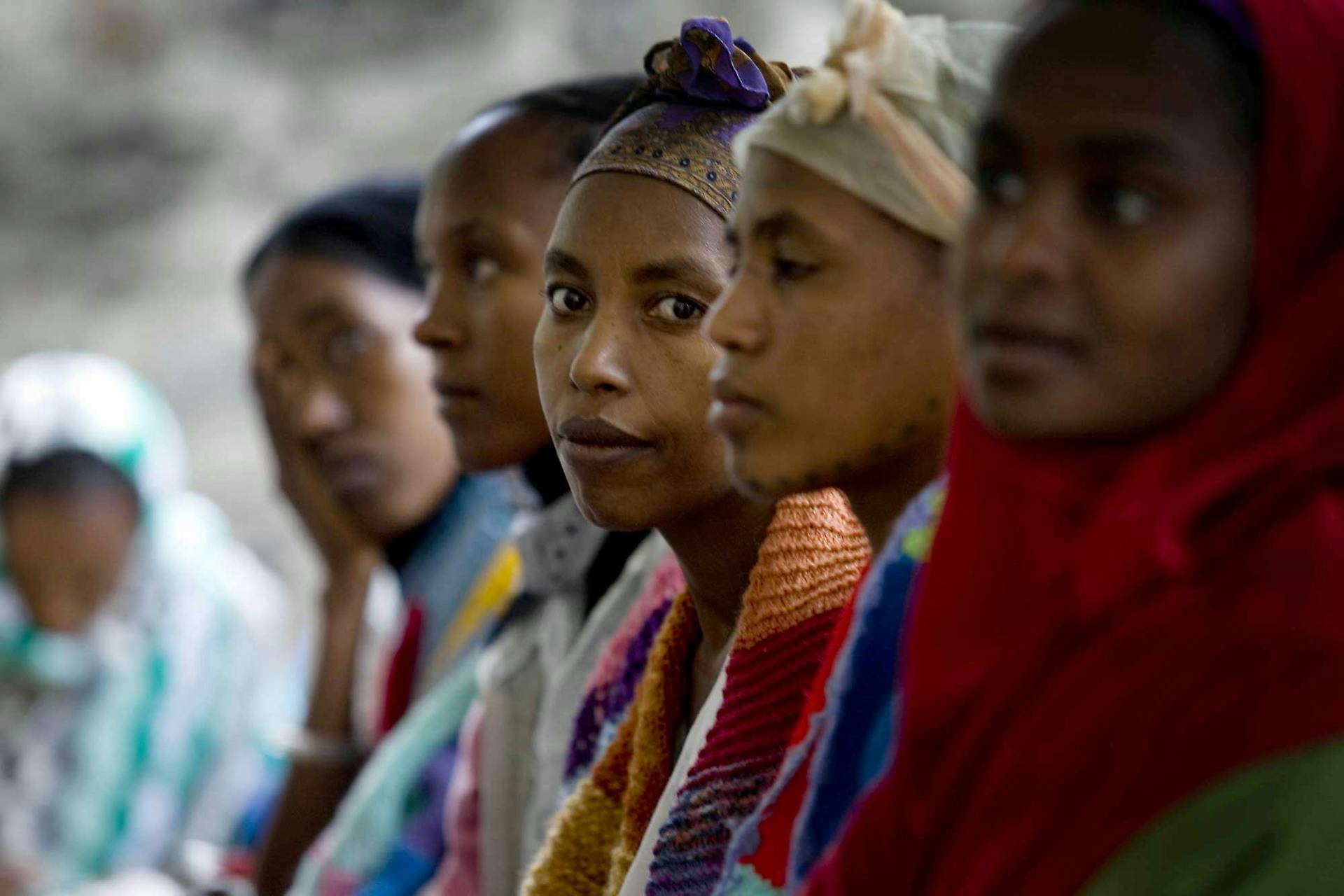
June 17, 2019
Women vs. men: is there a health equality gap?
Women live longer than men. That’s a fact. But is this an indication of privilege regarding the treatment of disease? Perhaps not. Indeed, while women live longer, they experience more years of poor health than men. This paradox highlights a number of life-long inequalities with complex and multifactorial causes. Addressing these issues is a real public health challenge to be addressed by all actors in the healthcare chain.
6 minutes
Women’s illnesses
: from difference to inequality
Some inequalities between women and men are less well known than others. Health inequality, for example, is very real and yet often excluded from the public debate. But what are we talking about exactly? Clearly, biological differences exist. For example, many women experience one or more pregnancies and childbirths during their lifetime, which can lead to specific diseases. According to the WHO, 800 women die each day from preventable causes related to pregnancy and childbirth. Furthermore, we should not forget that breast cancer is the most deadly cancer for women, and cervical cancer is the fourth. And also that 60% of Alzheimer’s patients in France are women.
At what point can we consider these biological differences to be inequalities? Men themselves are exposed to diseases of their own – such as prostate cancer, for example.
Inequality emerges, above all, when equality of opportunity is not achieved, when a lack of diagnosis, or of access to care or monitoring occurs due to a person’s gender. This is expressed at different levels.
Knowledge of the specificities of diseases in women
Let’s consider the example of a female-only disease: endometriosis. While it concerns one in ten women, it has remained unknown for a long time, because having painful periods was not regarded as a real symptom. Even today, it takes between 8 to 10 years to diagnose the disease, allowing time for it to develop and become even more difficult to treat.
Now let’s consider a condition that affects both sexes: cardiovascular disease. It is striking to note that only 35% of women are included in clinical trials in this field, even though they are more likely than men to die from a heart attack.
This raises the issue of a differentiated approach, taking into account the specificities of each gender, for more appropriate and effective treatments.
The persistence of the gender stereotype
If we examine the origins of these inequalities, what do we find? The myth of the weaker sex
that persists today in the collective imagination. Women are perceived as more inclined to complain, on the pretext that they are physically and psychologically more fragile.
Catherine Vidal has worked on these topics. As a neurobiologist, she is co-head of the think tank Gender and Health Research
, within the Inserm (National Institute of Health and Medical Research) Ethics Committee.

Dr. Michelle Lanvin
Hematologist at the Royal College of Surgeons in Dublin, AXA Research Grantee
Inequalities in health are partly induced by social representations related to the feminine or masculine gender. These can influence the attitude of patients themselves in the way they express their symptoms and whether or not they seek out medical care.
These representations also influence the behavior of caregivers, who listen differently according to a patient’s gender.
For example, given identical symptoms, a female patient reporting a feeling of chest tightness is likely to be prescribed anxiolytics, whereas a man will be referred to a cardiology clinic.
And what’s more: these representation biases are just as harmful to men. For example, men are under-diagnosed for osteoporosis, which is considered as a woman’s disease. While men suffering with depression are often perceived as simply undergoing a period of stress, and the condition is therefore poorly managed.
This means that fighting health inequalities and discrimination is good for everyone!
So how do we fight against this representation bias? First and foremost, it should be addressed through the education of both the general public and health professionals – during their studies and in their ongoing training. The Inserm gender and health research think tank has thus produced six Gender and Health: Down With Clichés!
videos, and in 2017 organized the first major conference on the subject: Sex and gender in health research, an innovative link
.
Exacerbating economic and social factors
In addition, Catherine Vidal emphasizes the importance of economic and social insecurity that particularly affect women:

Dr. Michelle Lanvin
Hematologist at the Royal College of Surgeons in Dublin, AXA Research Grantee
“Precarious employment (70% of which is carried out by women in France), small pensions, underestimation of the difficulty of working conditions, prevalence of women as the head of single-parent families... But also physical and sexual violence. This social reality leads to a lifestyle deterioration that has serious consequences on both physical and mental health, and can induce to give up cares.
Understanding health inequalities means taking into consideration all of these factors - biological, socio-cultural and economic. All of which demonstrates that this subject is a general public health issue.”
Our approach: taking action for women’s health
How then can we address these gender stereotypes in health? The whole healthcare chain has a part to play. Our AXA Research Fund team has fully taken stock of the issue. For this reason we are dedicating 1 million euros this year to advance research on diseases that affect women. Here are four of the eight projects we support on this issue:
1. Reducing maternal mortality through better diagnosis of congenital bleeding
According to WHO, postpartum hemorrhage (PPH) is the leading cause of maternal mortality (1/3 of deaths during childbirth). And yet, if anticipated, effective treatments exist to reduce risk of death from PPH. At present, up to 30% of PPH are unanticipated and occur in women regarded as low risk. One of the explanations given by Michelle Lavin, a hematologist at the Royal College of Surgeons in Dublin, Ireland, supported by AXA, is a poor awareness of congenital bleeding disorders. Dr Lavin set herself the objective of improving the recognition of previously undiagnosed bleeding disorders based on a simple questionnaire, identifying women at a higher risk of PPH than anticipated from routine screening. From this project, she intends to disseminate this approach more widely to optimize antenatal screening for PPH risk. Find out more here.

Dr. Michelle Lanvin
Hematologist at the Royal College of Surgeons in Dublin, AXA Research Grantee
Women’s health - and especially reproductive health - has long been neglected. The discussion of women’s bleeding - especially that occurring during childbirth - remains taboo, including among women themselves. This silence faces a reality: every year nearly 14 million women experience a postpartum hemorrhage. We must therefore tackle this problem and solve it through innovation.
2. A promising new strategy to fight osteoporosis
One in three women over the age of 50 will experience a fracture due to osteoporosis during her lifetime. And within the next 50 years, the number of hip fractures is expected to double, representing an additional impact for women’s health, and also for health systems.
The disease also affects men, but menopause plays a pivotal role, causing estrogen deficiencies. However, estrogen replacement has multiple adverse effects, including an enhanced risk of breast cancer. According to Laura Velázquez Villegas, a postdoctoral researcher at the School of Life Sciences of the Ecole Polytechnique Fédérale de Lausanne, Switzerland, it is therefore necessary to explore alternative avenues. For this reason, with AXA’s support, she decided to explore a promising approach by studying, in particular, the role of bile acids, produced by the liver, in bone turnover. The first results are very encouraging. Find out more here

Dr. Laura Velázquez Villegas
AXA Research Grantee
A fracture is very painful and disabling. It has a very strong impact on the quality of life for women, not only physically, but also psychologically, because they lose their self-confidence and autonomy. Innovation in the treatments we offer is therefore urgent.
3. Improving women’s health by reducing back pain
86% of women develop back pain during pregnancy, especially in the low back region. However, the causes of these pains are poorly understood because they have been the subject of few studies. Nina Goossens, recipient of an AXA Fellowship in the Faculty of Rehabilitation Sciences of the Hasselt University in Belgium, decided to shed new light on the mechanisms involved through an innovative approach based on the concept of proprioception (our ability to gauge the position of our body in space) combining biological, and also social and psychological explanations. Its ultimate goal: to identify preventative factors and improve therapeutic strategies. Find out more here.

Dr. Nina Goosens
AXA Research Grantee
Back pain is very common in pregnant women. Due to this, it is considered as an intrinsic part of pregnancy. Women are therefore expected to
put up with it. This is why the phenomenon is little studied, with health professionals preferring to focus on symptoms considered more serious. Such back pains experienced by women are therefore taken lightly. And yet, there can be considerable physical consequences because 10% of women suffer from serious complications that can persist for several years after the birth. Consequences can also be psychological due to the experience of frustration, helplessness, and anxiety – feelings that can deter a women from having another child.
4. Diagnosing cervical cancer with nanotechnology
Cervical cancer caused by certain types of sexually-transmitted papillomavirus is the fourth most common cancer in women, and the second most common in less developed regions of the world. The diagnostic methods used to detect the virus remain very expensive and involve bulky equipment.
Serap Aksu, a physics engineer at the Koc University in Istanbul (Turkey), took up the challenge with AXA’s support: what if the diagnosis could be made using a portable device that is easy-to-use, inexpensive and highly efficient?
To this end, she has mobilized her nanotechnology expertise to utilize the optical properties of certain metallic nanostructures and to create a completely new screening system. Find out more here.

Dr. Serap Aksu
AXA Research Grantee
This new device enables a more accurate diagnosis. The equipment is easy-to-use and inexpensive, allowing early treatment and giving the best chance of recovery to all women around the world.



